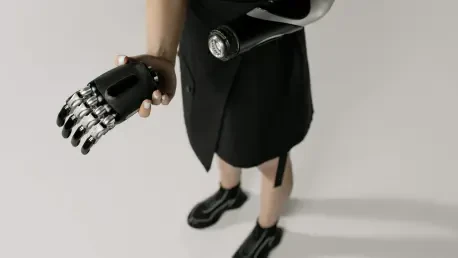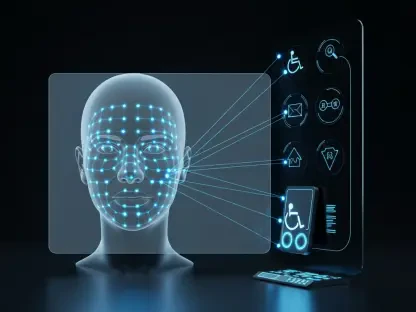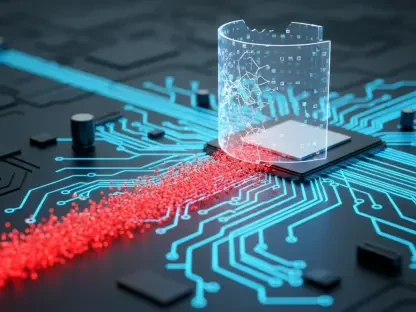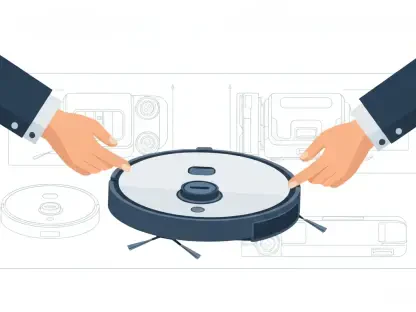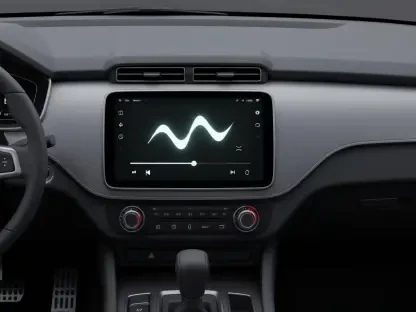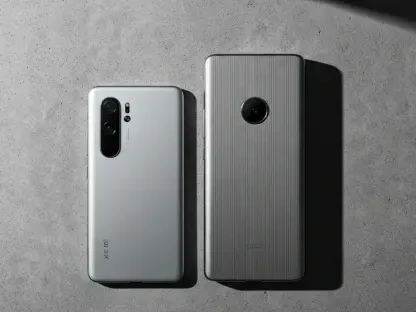With a career deeply rooted in technology advancements, Oscar Vail is at the forefront of innovation in robotics and related fields. His recent work on the MOTIF hand represents a significant leap forward in robotic dexterity and sensing capabilities. In this interview, he reveals the inspiration, challenges, and impressive outcomes associated with developing a robotic hand that integrates multiple sensor types into a singular platform.
What inspired the development of the MOTIF hand, and how does it differ from existing robotic hands?
The inception of the MOTIF hand was driven by the need to transcend traditional robotic manipulation, seeking inspiration from human sensory experiences. Unlike existing robotic hands focusing predominantly on mechanical designs, the MOTIF hand emphasizes integrated sensing, inspired by the way humans perceive and interact with their environment. By incorporating multimodal sensors, this hand offers enhanced capabilities for object manipulation across different contexts, marking a substantial evolution in robotic dexterity and sensing.
Can you explain the integration process of the different sensors—thermal, inertial, and force—into a single platform?
Integrating these diverse sensors required designing an extensible hardware platform that could unify various sensor modalities effectively. The sensors were melded into the hand’s architecture, leveraging both commercial and custom components. This platform not only merges different sensory inputs but also refines how these sensors operate collectively, enabling the hand to perform in conditions demanding nuanced perceptual feedback and responsive actions.
How do these sensors work in tandem to mimic human hand dexterity and sensing capability?
Each sensor plays a critical role in emulating human-like dexterity. The tactile sensor provides touch feedback, while the thermal sensor assesses temperature changes as humans would. The IMU captures motion-related data, and RGB visual sensors contribute to environmental awareness. Together, these sensors create a comprehensive sensory network allowing the hand to react, adapt, and execute tasks with a human-like finesse and perception.
What role does each sensor (thermal, depth, RGB, IMU, and tactile) play in enhancing the hand’s functionality?
Every sensor contributes distinctly to the hand’s versatility. Thermal sensors are paramount in detecting heat, crucial for safety and precision. Depth sensors aid in spatial awareness, while RGB cameras enhance visual perception. IMU sensors gather motion dynamics, essential for understanding mass and inertia, and tactile sensors provide vital contact feedback. This synergy of sensors enriches how the hand perceives and interacts with its surroundings.
Could you describe the challenges you encountered while developing the MOTIF hand and how you overcame them?
Significant challenges included achieving seamless integration without compromising on sensor performance and managing the complexities of multimodal data synthesis. We overcame these hurdles through iterative testing and refinement, focusing on enhancing software algorithms for better sensor coordination. Customizing components also allowed us to tailor solutions that addressed unique problems related to sensor communication and functionality.
How did you conduct the experiments to evaluate the MOTIF hand’s features, and what were the key findings?
The experiments involved a controlled evaluation of the hand’s interaction with objects, focusing on thermal safety and weight differentiation capabilities. In doing so, we discovered that combining thermal and 3D reconstruction drastically improved the hand’s safe interaction with heated objects while the inertial sensing enabled accurate classification based on mass. These findings highlighted the hand’s potential in real-world tasks requiring perceptual adaptability.
What specific outcomes from the thermal sensing and 3D reconstruction did you find the most impressive?
One of the standout outcomes was the hand’s ability to navigate objects’ thermal landscapes effectively, avoiding dangerous contact points while securely manipulating them. The synergy between thermal sensing and 3D reconstruction guided this precision, showcasing how these tools can transform the way robots engage with environments fraught with thermal risks.
How does the MOTIF hand handle the classification of objects with the same shape but different weights?
The MOTIF hand excels in classifying objects through nuanced fingertip motions, utilizing inertial sensing data to discern mass differences. This capability allows it to differentiate objects based on weight rather than relying solely on shape—an essential feature for tasks requiring precise handling regardless of superficial similarities.
In what way do you think the MOTIF hand could change or improve tasks in household and industrial settings?
By enabling robust manipulation of hot and diverse objects, the MOTIF hand could revolutionize tasks in home environments like cooking and cleaning, as well as industrial settings involving high temperatures and intricate components. It promises efficiency and safety improvements, allowing robots to take on complex roles traditionally reserved for human workers.
How does the ability to handle hot objects expand its usage range, particularly in high-temperature environments?
Handling hot objects opens possibilities for the MOTIF hand to operate in domains requiring thermal resilience, such as professional kitchens, steel mills, and foundries. This capability allows it to withstand and engage with high-temperature environments safely, enhancing operational scope and potential application realms.
What future enhancements do you envision for the MOTIF hand, including sensors or algorithms?
The next phase involves refining tactile feedback with high-resolution sensors and advancing multimodal algorithms to improve precision and interaction capabilities. We’re exploring novel applications, aiming to present the hand’s usefulness in scenarios necessitating intricate in-hand manipulation and complex thermal interactions.
Are there new applications or environments you are looking to explore with the MOTIF hand?
I’m excited about venturing into environments demanding high sensory acumen and adaptability, such as advanced manufacturing processes and automated culinary tasks. We aim to push boundaries, allowing robots to perform functions requiring dexterous manipulation and sensory responsiveness.
Could you highlight some reactions or feedback received during the ISER 2025 conference regarding your work?
The reception was overwhelmingly positive, with peers acknowledging the potential for our work to inspire further innovation in sensor integration. Researchers expressed keen interest in exploring these concepts within their own work, signaling a collaborative push towards advancing robot sensing capabilities extensively.
Do you anticipate the MOTIF hand inspiring more research or similar innovations in the field?
Absolutely. The MOTIF hand sets a precedent for blending sensor technologies in robotics, encouraging researchers to explore this paradigm. It’s a call to rethink robotic capabilities, motivating others to innovate within and beyond current tech boundaries, potentially catalyzing significant breakthroughs in sensor-enriched robotics.
How do you see the MOTIF hand integrating into everyday life or industry in the next decade?
Over the next decade, I foresee the MOTIF hand seamlessly integrating into sectors previously resistant to automation. With its ability to tackle variable object manipulation and environmental challenges, it could redefine our interactions with robots, making them indispensable in both personal and professional contexts.
